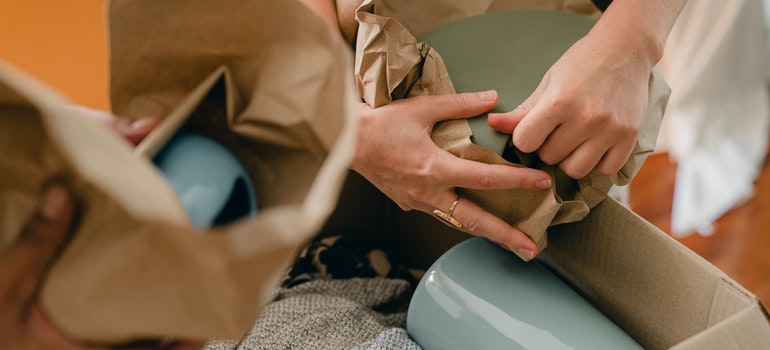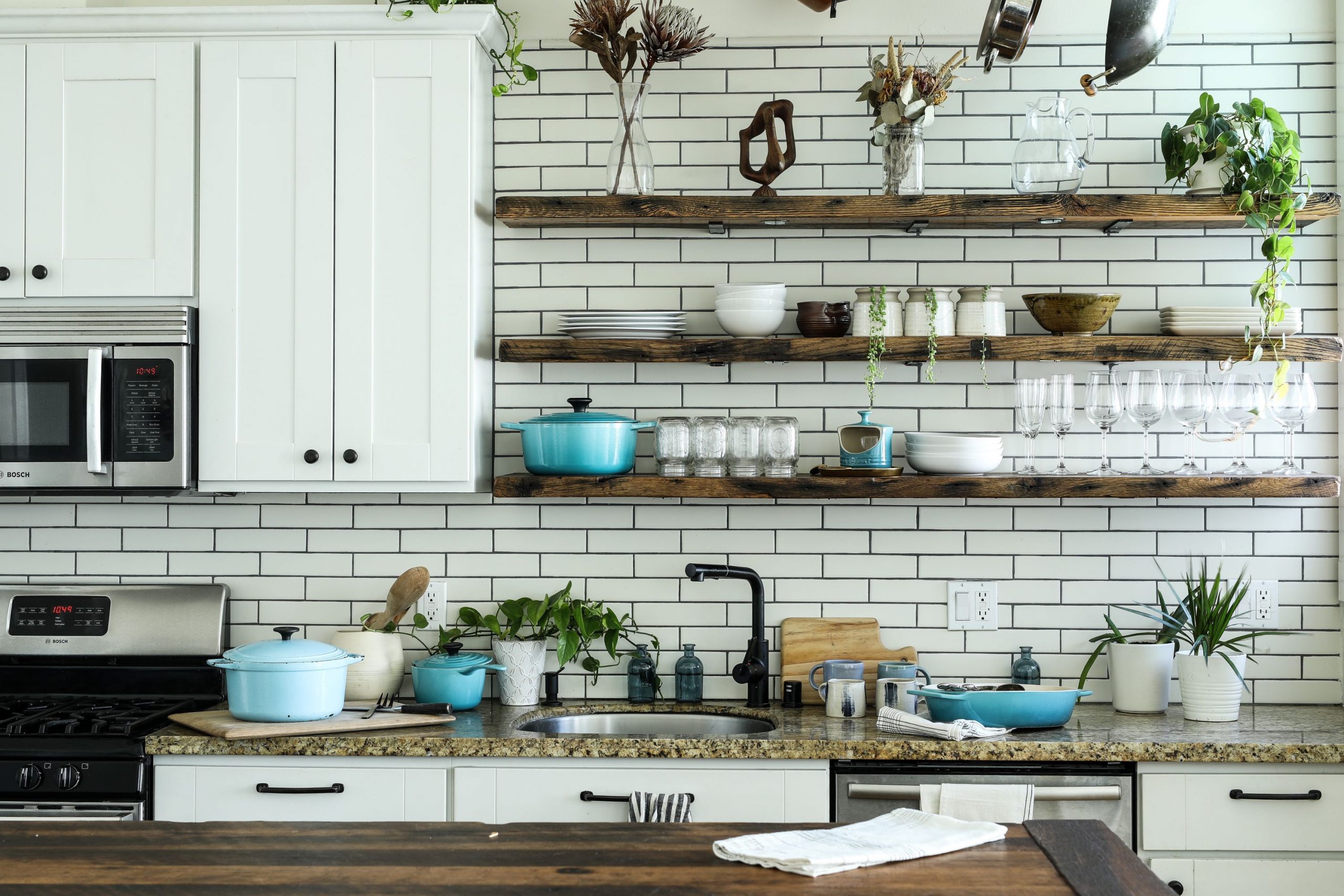For every relocation, it is important to develop a good plan in the first place. Don’t rush, take your time if you are not in a hurry, read about it first. Most people don’t like the kitchen, with all the dishes, plates, and sensitive appliances, as well as other small items and clutter stuffed on the shells and drawers. That said, you are going to need a good plan, focus, and commitment to successfully finish DIY packing without any broken item and additional expenditures made in the process. An alternative for NYC residents is to check out some of the moving companies Manhattan has to offer. Professional help is always an easy and smart choice. Otherwise, if you want to save nerves and money while DIY relocating your kitchen, read carefully this guide for packing the kitchen – tips and tricks.
Think steps ahead, make a plan
When packing the kitchen, prior planning and good organization are obligatory for every successful move. Professionals tend to have developed plans and comprehensive organization so they could be able to guarantee a flawless move. So, just as you would do for every other room in your house, develop a plan and start implementing it.

The more you plan the easier will be when the time for the move comes. Try to think about all the brittle materials used for plates, cups, and glasses. Prepare the necessary wrapping materials for its packing. Since the kitchen is full of fragile items, think about different kinds of wrappers (newspapers or any other paper will do) as well as different kinds of foils (usual plastic or bubble wrap). Prepare strong card boxes that will be able to sustain a large weight of piled-up plates and cluttery. Also, you might want to call a friend or two to help you with the usual heavy appliances such as refrigerators and stoves.
Also, you can call a professional moving company to help you with everything. There is quite a number of reliable moving companies in NYC. All the same, if you need local or interstate relocation, consider checking out the long-distance movers Manhattan has to offer.
You are probably aware that there are multiple ways of doing the same things but with many different results, the same is with packing. Sometimes cutting corners, in the beginning, can make a huge loss later when unpacking. One of the dread possibilities is that you can end up with broken plates during transport, a damaged appliance, or even with impaired health.
The universal rule implies that heavy stuff is always packed at the bottom and lighter items go on top of the heavy ones. Pack a few essential kitchen items that will be easy to reach before and right after your move. An additional lifesaving tip when packing the kitchen is that you should arm yourself with smaller boxes as well. Silverware (forks, knives, spoons, and such) can pack quite a mass when grouped, especially when it comes to larger families. Try to calculate the time needed for each step and provide yourself with the checklist to look after when packing those card boxes.
Go through all the items that you hardly use and donate or toss them out. Before doing anything else, sorting out useless items is a great way to reduce the clutter and ease your packing right from the start. Now is the best time to rethink all of the “long time no use” kitchen belongings. When packing a kitchen, the first step would be to separate the items that are no longer relevant.

Grab a large bag or box! Yes, you are going to need a very large bag for this, and start pulling out all that unnecessary cooking items you accumulated over time. We all have these.
Wrap, wrap, wrap everything!
Wrapping is the first step. Start from the larger items first and advance to the smaller ones. Try to use the Russian doll concept and put smaller pots and pans into the larger ones. Try to apply at least some basic wrapping on them. Items using Teflon material should not be scratched and it is possible to damage its surface when transporting. So, it’s a good health tip to provide these items with basic protection when packing the kitchen. Try to isolate the glass and ceramics as much as you can. You should not cut corners with the plates; they should be wrapped individually and not just tightened together without isolation in order to speed up packing. Wine glasses should be wrapped with additional precaution measures considering the usual thin glass frailty.
For cluttery use smaller boxes. Since forks and knives are usually metal or plastic you can pile them together without any special concerns. Don’t forget to mark all the boxes and bags, this will save your nerves when unpacking. NYC has thousands of kitchens, restaurants are part of the cities folklore and professional moving companies are accustomed to marking their boxes every time, Manhattan commercial movers can be rented when larger commercial-scale kitchen moves are required.
Smaller kitchen appliances should be wrapped with bubble wraps, they are easy to brake and chances are they are quite expensive. You should have kept somewhere their original box, usually, it is necessary to keep with the guarantee. If not, try to provide them with a good level of stability when transporting. Since they have small delicate plastic parts in them as well as electronic, constant road bumps or tight turns can cause irreversible damage to them. Large appliances such as refrigerators can be safely tucked in with other boxes in the back of a van. As long as they have some isolation between them and the floor/wall of the van/truck, they are going to be fine.

Let’s go through our wrapping checklist:
- Acquire quite some amount of wrapping materials (newspapers, bubble wraps or the usual plastic wrappers will also do when packing the kitchen);
- Acquire stiff card boxes for general packing (start with 4 small, 6 medium, 3 large);
- Prepare Styrofoam or cloth covers for separating heavy appliances from the truck floor/wall.
The next one is our packing tips checklist:
- Pack cluttery and silverware in smaller boxes and wrap them in towels;
- Arrange pans and pots one to another, wrap Teflon items for health reasons;
- Wrap glasses with extra caution, pack them tightly so they cannot move while in transport;
- Protect plates and other ceramic items separately, they are easy to brake and should have quite some protection;
- Wrap small appliances with bubble foil, tuck them in tightly with no possibility to move while in transport;
- Separate van floors and walls via Styrofoam from the large appliances to avoid scratches.
Tricks for packing the kitchen items
When packing the kitchen, try to always pack plates vertically inside the card box. When laid flat they are likely to break under the pressure of the upper mass. This is especially important if you expect a bumpy ride.
Additionally, consider hiring a professional moving company to pack your kitchen items, especially if you are lacking in time, experience, or dealing with expensive items. It can be a bit more expensive but they can guarantee and assure the safety of your items. Don’t try to save on packing material. The more you use the better. Newspapers might not be the best wrapping material out there but they are still a fairly common item in any house and can be money savers. Ideally, buy paper wrappers from the hardware store or use bubble wrap.
Also, always make a plan and think twice about the consequences of the poorly wrapped kitchen item. Relocation can be a long and tedious job, but take your time to plan and prepare everything for the relocation day. Try to compose each room’s times together so you don’t rush when packing the kitchen. The usual advice is: do the hard work first.
Don’t leave the kitchen packing for the end, approach this job fully rested and concentrated.





